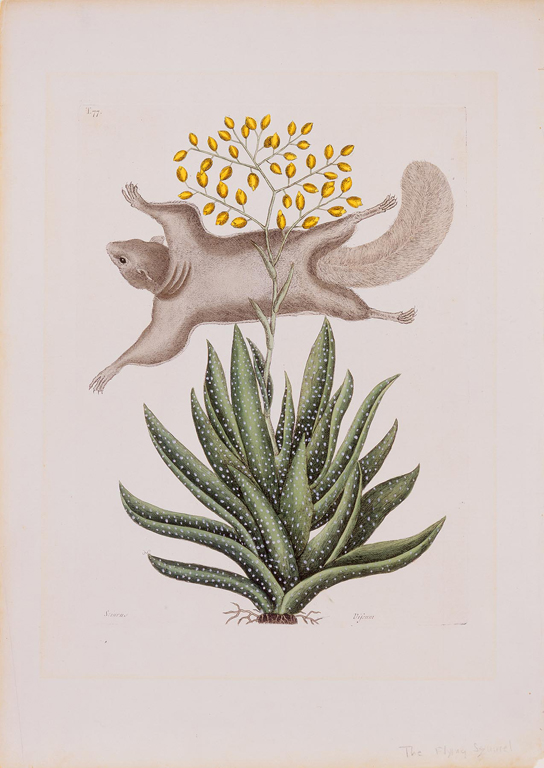Catesby, Audubon, and the Discovery of a New World: Prints of the Flora and Fauna of America
Koss Gallery
Early in the eighteenth century, Mark Catesby (1683–1749) traveled from his native England to the British colonies in North America and began his ambitious undertaking to document the flora and fauna of the new world. His explorations of the southern colonies led to the publication of his treatise, The Natural History of Carolina, Florida and the Bahama Islands, featuring 220 beautifully hand-colored etchings of the birds, fish, reptiles, and plants he encountered.
Catesby’s work was widely praised and set the standard for the next generation of naturalists, including John James Audubon (1785–1851). Audubon, who was born in Haiti, raised in France, and made his home in the newly founded United States of America, was a gifted entrepreneur, artist, and naturalist. He sought to document all the birds in his new country in watercolors, which were then engraved and carefully colored by hand. His masterwork, The Birds of America, from Original Drawings Made during a Residence of 25 Years in the United States, is a monument in American art.
This exhibition will feature approximately sixty prints of the plants, birds, mammals, and reptiles of North America almost exclusively drawn from the Museum’s Collection. Additional artists, including Alexander Wilson and John Woodhouse Audubon, will inform the exhibition and enhance our understanding of this crucial moment in art, science, and natural history.
This exhibition is curated by Associate Curator of Prints and Drawings Mary Weaver Chapin, Ph.D.
- Mark Catesby, The Flying Squirrel. Milwaukee Art Museum, Gertrude Nunnemacher Schuchardt Fund, presented by William H. Schuchardt. Photo by John R. Glembin

